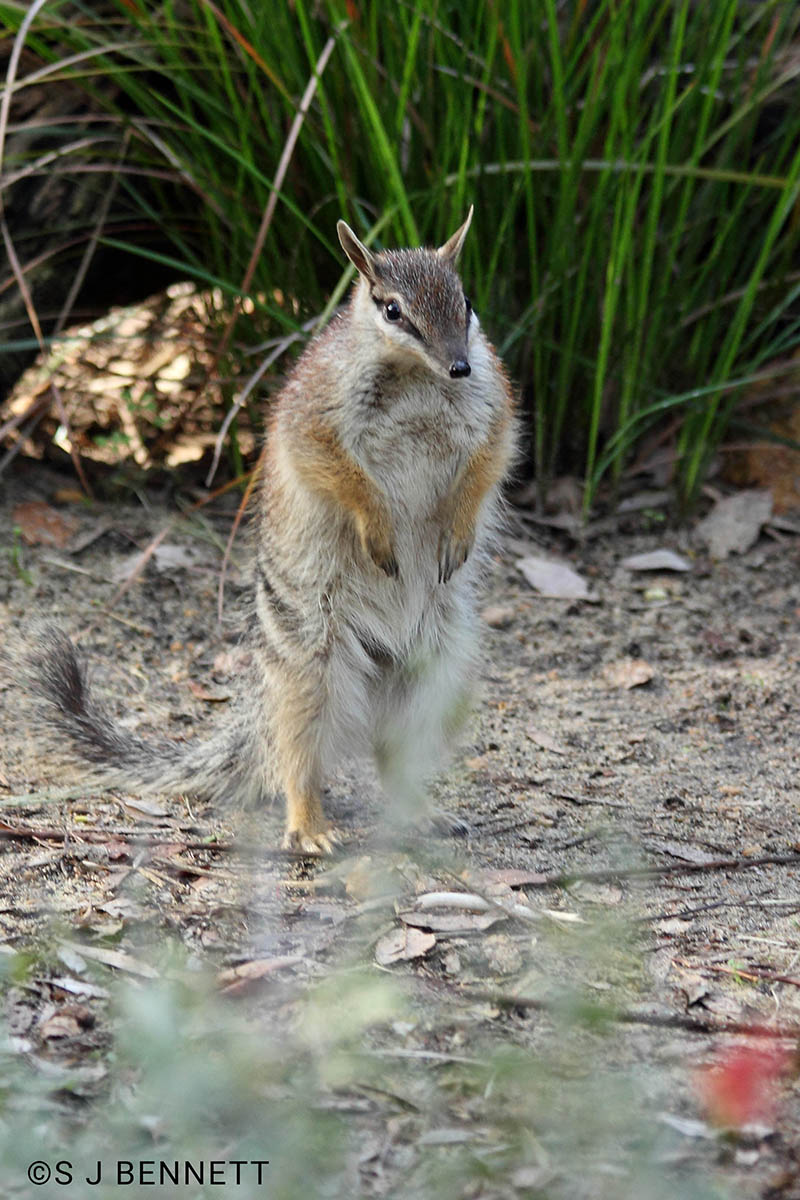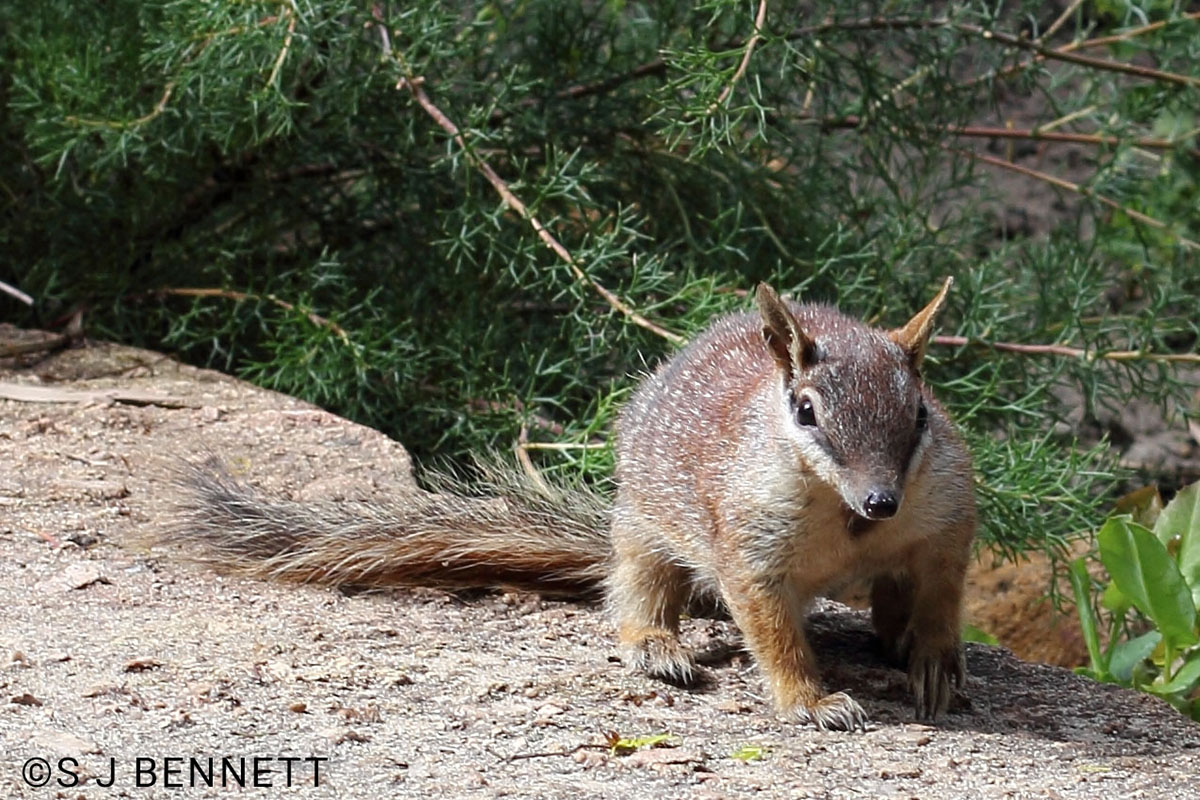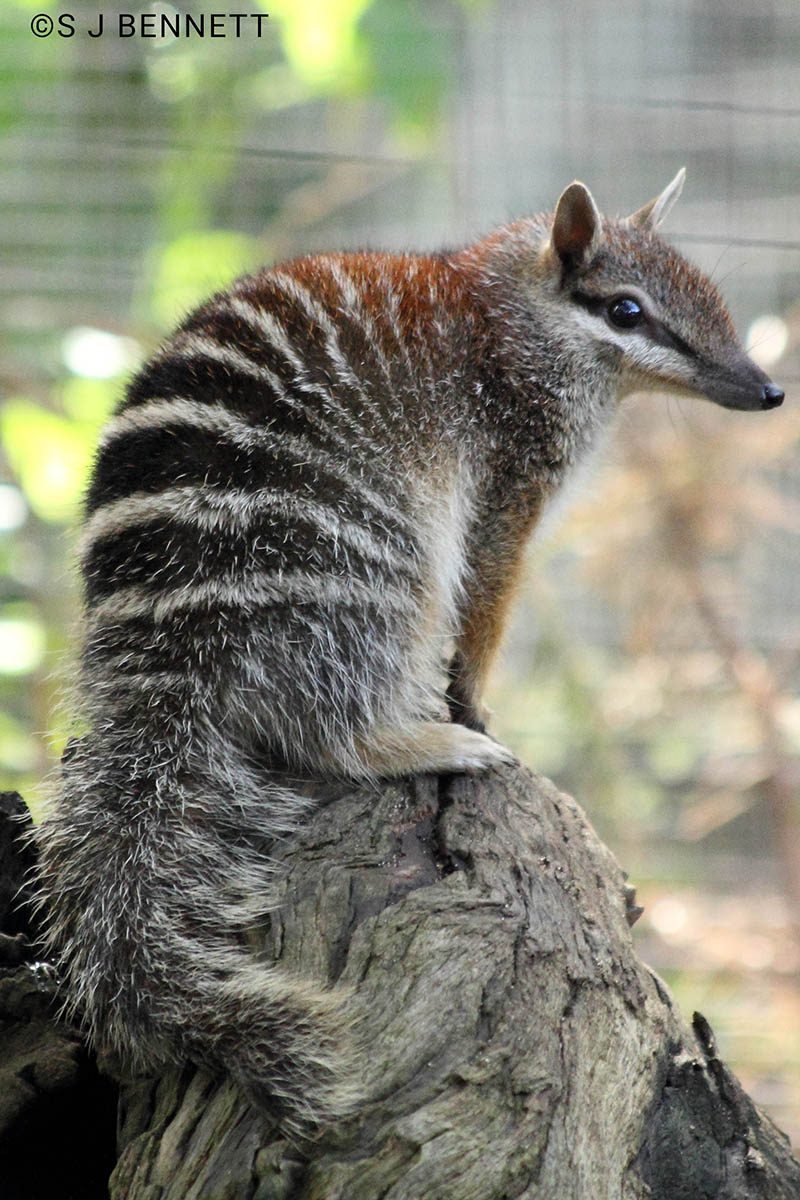
https://www.flickr.com/photos/quollism/
Please contact the photographer directly if you would like to use this picture.
The numbat (Myrmecobius fasciatus) is very different from other marsupials. It is the only living representative of the Myrmecobiidae family of carnivorous marsupials, and interestingly had the (now extinct) Tasmanian tiger as a cousin. Once widespread across Australia, the species is now extinct in over 99% of its former range.
The base fur colour varies considerably, but all members of the species have striking black and white bands across their bodies. It’s long, bushy tail gives it a superficial resemblance to the British squirrel. It is also known as the banded anteater, but surprisingly the numbat feeds almost exclusively on termites. Adults need to eat about 20,000 termites each day, which are dug up and scooped out from dead trees, logs and leaf litter. Its long, thin tongue can be extended at least 100 mm, and its mouth is heavily ridged so all the termites can be scraped off and swallowed. It usually finds termite mounds through scent, but it also has the best eyesight of any marsupial.

https://www.flickr.com/photos/quollism/
Please contact the photographer directly if you would like to use this picture.
The numbat is the only Australian mammal that is solely active during the day, because it has to wait until the termites are active. After spending the whole day foraging for food, at night the numbat retreats to a nest, usually in log or tree hollows or burrows. Since red foxes (Vulpes vulpes) were introduced to Australia in the 19th century the numbats have used more tree hollows, an adaptation to stop them being predated. Now the only surviving natural populations are in areas containing lots of hollow logs and trees.
In winter, numbats can go into semi-hibernation (torpor) as part of their daily cycle to reduce energy expenditure. Unlike other marsupials, the numbat female does not have a pouch in which to carry her young, which are born from January-May. Instead, pups attach themselves to one of her four nipples, and are kept warm and protected by her long underbelly hairs.

https://www.flickr.com/photos/quollism/
Please contact the photographer directly if you would like to use this picture.
Before the European settlement, the numbat occurred in Eucalyptus and Acacia woodlands and grasslands all across southern Australia. By the late 1970s, after a dramatic decline the species had collapsed to just a few isolated populations. Only two original populations still survive, one at Dryandra Woodland and the other at Perup Nature Reserve in southwest Australia, which are isolated from each other by 150 km of unsuitable habitat. They are classified as Critically Endangered and it is estimated there are less than 1,000 individuals left. Since 1994, intensive species recovery programmes and captive breeding have helped establish four new populations in Western Australia, and two more fenced populations in South Australia and New South Wales.
Links
- Videos of adult numbats feeding
- Hand-rearing baby numbats at Perth Zoo
- Project Numbat